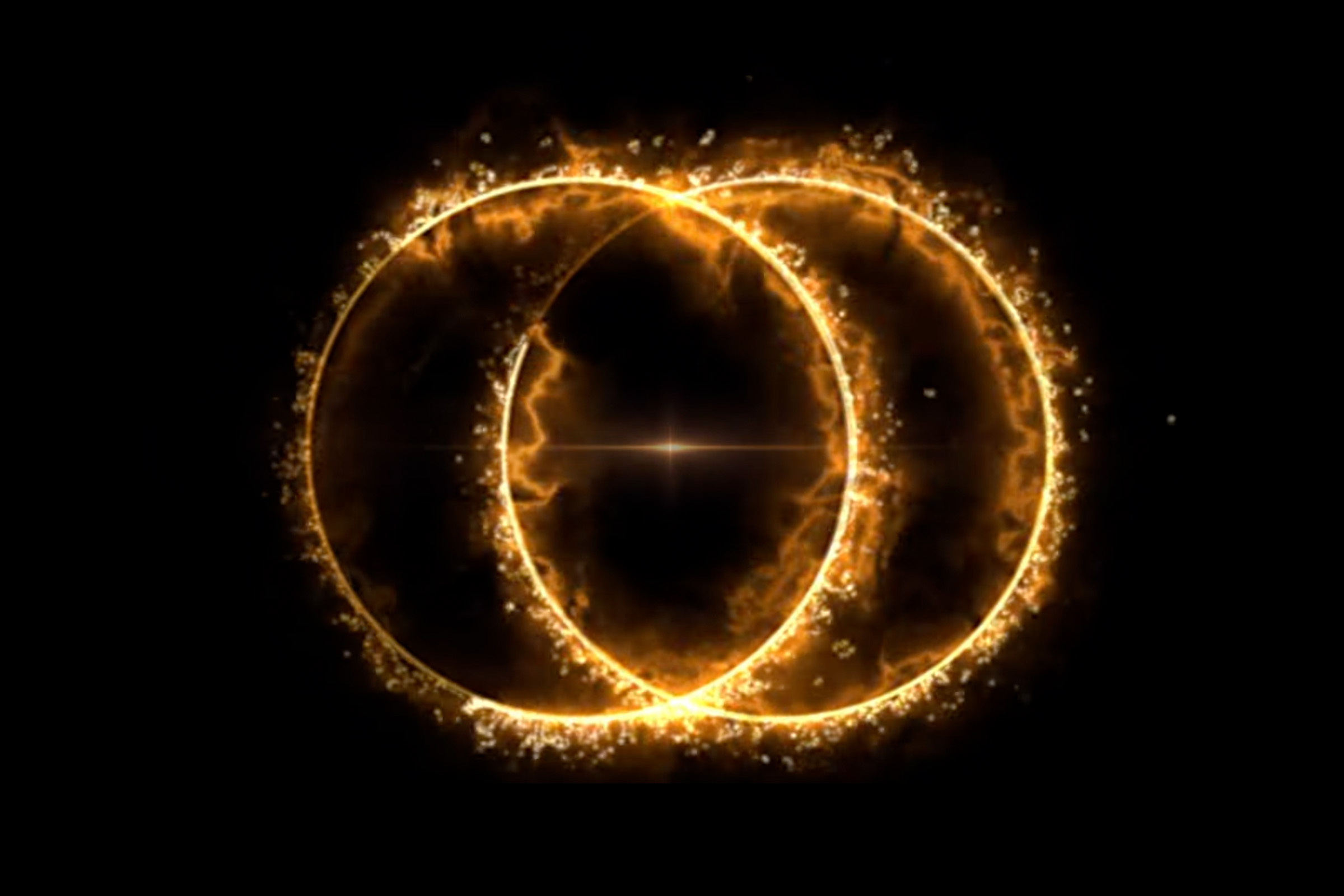Science
Astronomers Discover Massive Twin Cosmic Rings 7.5 Billion Light Years Away

Astronomers have made a remarkable discovery of a colossal double-ring structure located approximately 7.5 billion light years from Earth. This extraordinary formation, known as RAD J131346.9+500320, glows brightly in radio wavelengths and spans hundreds of thousands of light years across. The findings, detailed in a recent study published in the Monthly Notices of the Royal Astronomical Society, add to a rare category of cosmic objects known as Odd Radio Circles (ORCs), of which only a handful have been identified since their initial discovery six years ago.
The newly identified ORC stands out as only the second known to consist of two rings, intriguing astronomers who are still trying to understand its origins. ORCs are believed to be composed of magnetized plasma and are detectable solely through radio light. They typically encircle a central galaxy and can be many times larger than the Milky Way. Despite their massive scale, the mechanisms behind their formation remain elusive, prompting speculation that they may be remnants of cosmic events that occurred billions of years ago.
Ananda Hota, the lead author of the study and an assistant professor at the University of Mumbai, described ORCs as “among the most bizarre and beautiful cosmic structures we’ve ever seen.” He emphasized their potential importance in understanding the co-evolution of galaxies and black holes.
The discovery of RAD J131346.9+500320 highlights its placement within a galaxy cluster, which consists of multiple gravitationally bound galaxies in close proximity. This environment raises questions about how interactions between the surrounding plasma and the galaxy’s jets—a highly energetic stream of particles emitted by supermassive black holes—may influence the formation of ORCs. Hota suggests that the jets could create magnetized plasma clouds, which might then be re-energized by significant explosions near the galaxy’s center, resulting in the formation of glowing radio rings.
Co-author Pratik Dabhade, an assistant professor in the astrophysics division at the National Centre For Nuclear Research in Warsaw, Poland, noted that these discoveries indicate that ORCs and radio rings are not isolated phenomena. “They are part of a broader family of exotic plasma structures shaped by black hole jets, winds, and their environments,” he stated.
This research is part of a wider exploration into what astronomers call a “low-surface brightness universe,” where many cosmic objects, previously hidden from view, are now being revealed thanks to advances in radio telescope technology. Other intriguing discoveries in this realm include a remarkably round supernova remnant and Wolf-Rayet stars that shine intensely but exist for only a brief period in cosmic terms.
The identification of new ORCs and the insights they provide into the universe’s structure and the behavior of black holes continue to captivate the scientific community, opening new avenues for research and exploration in astrophysics. As astronomers delve deeper into these cosmic mysteries, the potential for groundbreaking discoveries remains vast.
-

 Lifestyle5 months ago
Lifestyle5 months agoLibraries Challenge Rising E-Book Costs Amid Growing Demand
-

 Sports4 months ago
Sports4 months agoTyreek Hill Responds to Tua Tagovailoa’s Comments on Team Dynamics
-

 Sports4 months ago
Sports4 months agoLiverpool Secures Agreement to Sign Young Striker Will Wright
-

 Lifestyle4 months ago
Lifestyle4 months agoSave Your Split Tomatoes: Expert Tips for Gardeners
-

 Lifestyle4 months ago
Lifestyle4 months agoPrincess Beatrice’s Daughter Athena Joins Siblings at London Parade
-

 Science4 months ago
Science4 months agoSan Francisco Hosts Unique Contest to Identify “Performative Males”
-

 World4 months ago
World4 months agoWinter Storms Lash New South Wales with Snow, Flood Risks
-

 Science5 months ago
Science5 months agoTrump Administration Moves to Repeal Key Climate Regulation
-

 Business5 months ago
Business5 months agoSoFi Technologies Shares Slip 2% Following Insider Stock Sale
-

 Science5 months ago
Science5 months agoNew Tool Reveals Link Between Horse Coat Condition and Parasites
-

 Sports4 months ago
Sports4 months agoElon Musk Sculpture Travels From Utah to Yosemite National Park
-

 Science5 months ago
Science5 months agoNew Study Confirms Humans Transported Stonehenge Bluestones









